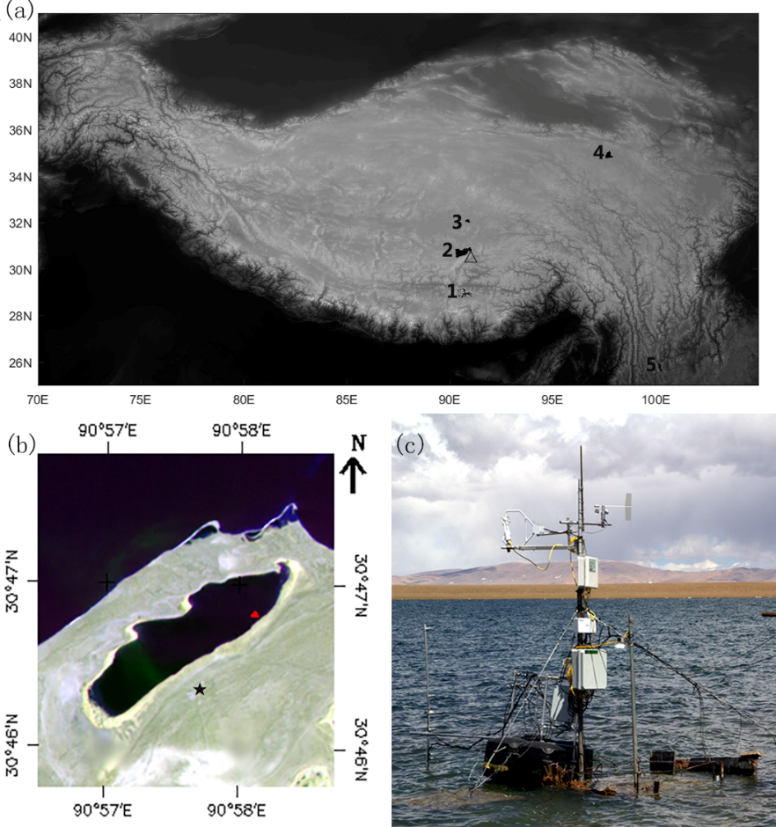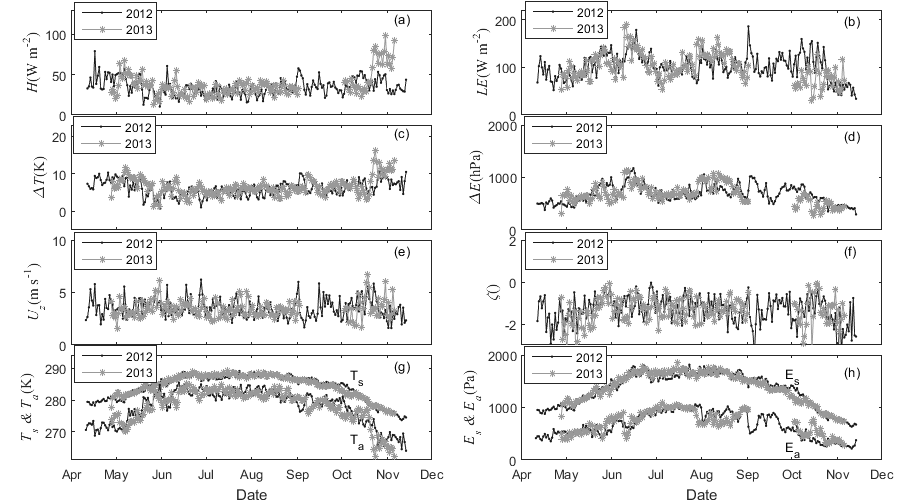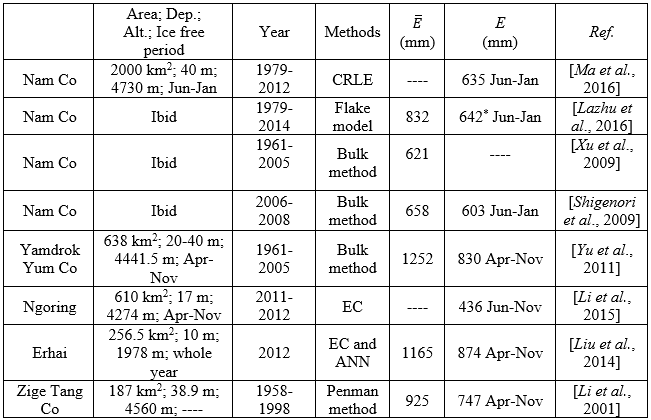青藏高原存在有世界上海拔最高的湖泊群。在全球气候变暖的背景下,高原湖泊的面积和数量大部分呈现扩张和增加的趋势。但是由于高原严酷的自然环境条件,高原湖泊湖气相互作用过程和湖泊蒸发的直接观测依旧十分缺乏。鉴于此,马耀明研究员课题组分别先后在纳木错小湖和纳木错湖架设涡动相关和常规气象观测仪器(图1),致力于研究高原湖泊湖气相互作用过程,获得小湖和大湖的实际蒸发量,并为高原湖泊的模型模拟提供验证。近日,基于纳木错小湖的湖气交换观测数据,结合总体传输模型的模拟结果分别对纳木错小湖2012年和2013年非结冰期(4月至11月)的湖泊水热通量进行数据序列重建(图2),得到了纳木错小湖非结冰期的能量平衡特征和湖面蒸发量。
研究发现:纳木错小湖的湖-气温度差和水汽压差为正,大气多处于不稳定和中性状态,湖面典型动力学粗糙度为3.35×10-4 m。另外,在半小时时间尺度下,风速大小对湖泊湍流通量(感热和潜热)的影响显著,而在日或月时间尺度下湖气温度差和水汽压差与湍流通量的相关性较好。小湖非结冰期的能量平衡各分量的能量闭合率可达到0.97,并且其非结冰期的湖面蒸发量为812mm,比纳木错大湖模型模拟的蒸发量结果高200mm左右(表1)。
该研究得到了中国科学院项目(XDB03030201和QYZDJ-SSW-DQC019),自然科学基金(91557212,41375009和41661144043)等项目的支持,研究成果近期发表于JGR-Atmosphere期刊。论文链接:http://onlinelibrary.wiley.com/doi/10.1002/2016JD026109/abstract

Figure 1 (a) The positions of several high-altitude lakes, with numbers 1-5 indicating the positions of Yamdrok Yum Co, Nam Co, Zige Tang Co, lake Ngoring, and Erhai, respectively; (b) an image of the small lake and the location where field observations were collected; (c) the photo of the instruments.

Figure 2 Variation of daily (a) H, (b) LE, (c)Δ T, (d) ΔE, (e) U_z, (f) ζ , (g) T_s&T_a and (h) E_s&E_a in ice-free periods of 2012 and 2013.
Table 1 Evaporation from high-altitude lakes on the Tibetan Plateau.  is the total evaporation over the whole year; E indicates evaporation over specified months. Superscript “*” indicates average value of 2012-2013 in [Lazhu et al., 2016].
is the total evaporation over the whole year; E indicates evaporation over specified months. Superscript “*” indicates average value of 2012-2013 in [Lazhu et al., 2016].




